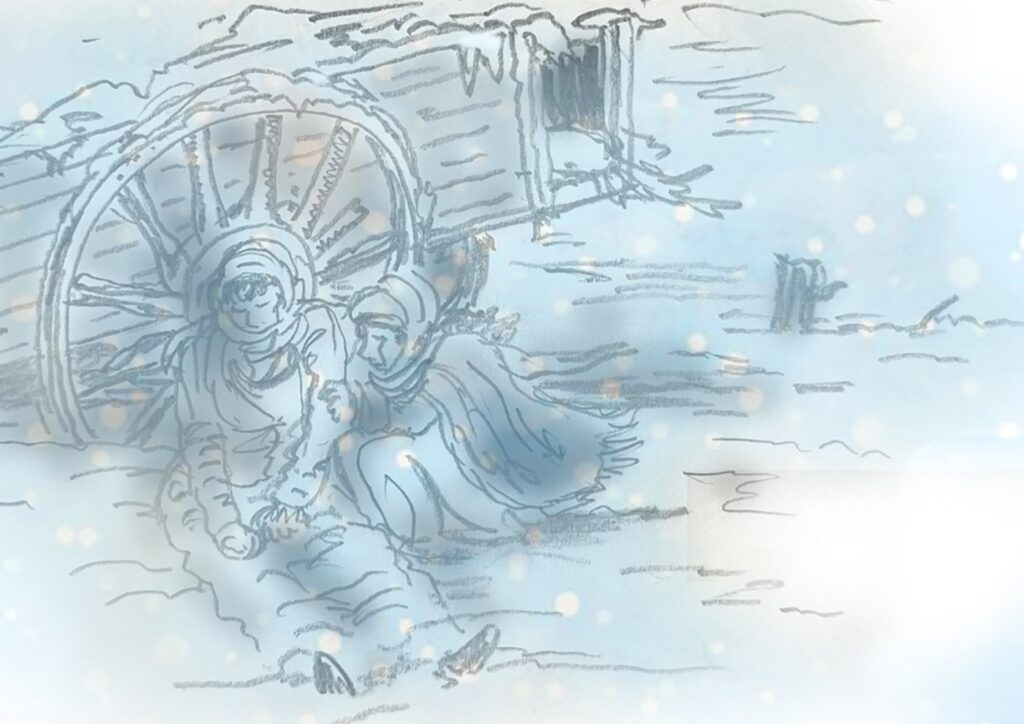
Rough winter
It’s been a tough winter for Californians, but here’s a story of one of the worst. The families of brothers George and Jacob Donner and businessman James Reed left Springfield, Missouri, on April 14, 1846. It was two years before gold would be discovered in California and 10 years before Chinese workers would start building the Transcontinental Railroad.
At its peak, the Donner Party would have 87 people — 29 men, 15 women and 43 children — in a column of 23 ox-drawn wagons.
Oregon Trail
The group made good progress through southeastern Wyoming, covering roughly 650 miles (about 18.5 miles a day) in six weeks. On July 20, 1846, the company divided, with most of the wagon train using the well-known Oregon Trail to continue the journey west. The Reeds, the Donners and a number of others chose to head southwest toward Fort Bridger. The group had elected to use a “shortcut” to California.
Hastings Cutoff
On July 31, the Donner Party entered Hastings Cutoff, which would take the group south of the Great Salt Lake. Hastings had claimed that his route would shave more than 300 miles, but was 125 miles longer and some of the most inhospitable country of the trail.
Killing in the desert
Stress was high among the exhausted migrants and on Oct. 5, an altercation between Reed and a teamster employed by another family ended with Reed fatally stabbing the man. Some members of the party suggested that Reed be hanged, but he was banished. Reed would continue west on horseback while the rest of his family remained with the Donner Party.
Stuck in the Sierra
Paiute warriors killed several of the party’s oxen after they left the area around Reno and headed for the mountain pass. Members ditched everything except for food, clothing and the barest essentials for survival to minimize the load on their animals. On Oct. 31, they found their progress blocked by deep snow around the pass.
About three-quarters of the emigrants camped at the east end of Donner Lake while the George and Jacob Donner families and a few others who were behind camped about six miles away, at Alder Creek, just north of present-day Truckee.
After more than six weeks being stranded in the snow, a party of 10 men and five women set out to cross the mountains on makeshift snowshoes on Dec. 16. Miwok villagers made first contact with the surviving members and fed and clothed them during a month-long journey in storms to get over the mountains. Two men and all the women got through to the Sacramento Valley.
The relief parties
Settlers of California, along with James Reed, who had been expelled, organized a relief party that left Fort Sutter on Jan. 31, 1847. Struggling through the deep snow, seven men reached the lake camp on Feb. 18. They then took 23 of the starving emigrants, including 17 children, back to the settlements; several deaths occurred on the way. Other relief parties followed (a total of four), but because of illness and injuries, it was impossible to remove everyone.
The last survivor, Lewis Keseberg, who had supported himself during the last weeks by cannibalism, did not leave camp until April 21.Keseberg was vilified as a cannibal and accused of being a thief and a murderer. Keseberg eventually sued Edward “Ned” Coffeemeyer, one of his own rescuers, for defamatory statements. Keseberg won in court, but was only awarded $1.
Only 45 of the original 81 members of the Donner Party survived, 32 of them children.
Sources: California State Parks, History Channel, U.S. Department of Transportation, HistoircOregoncity.org, oregontrail.blm.gov
